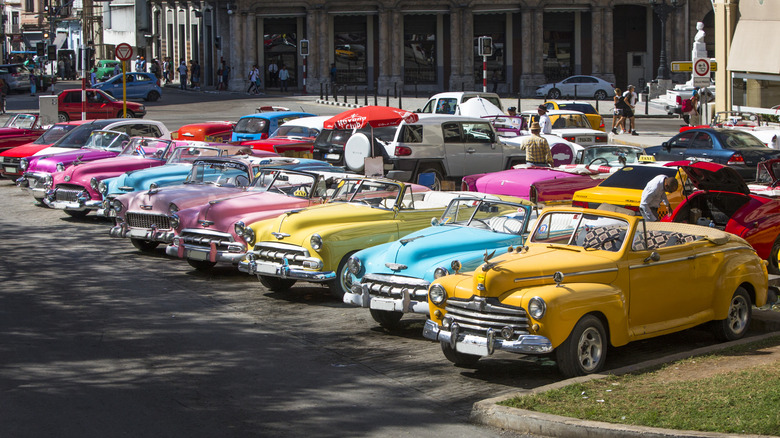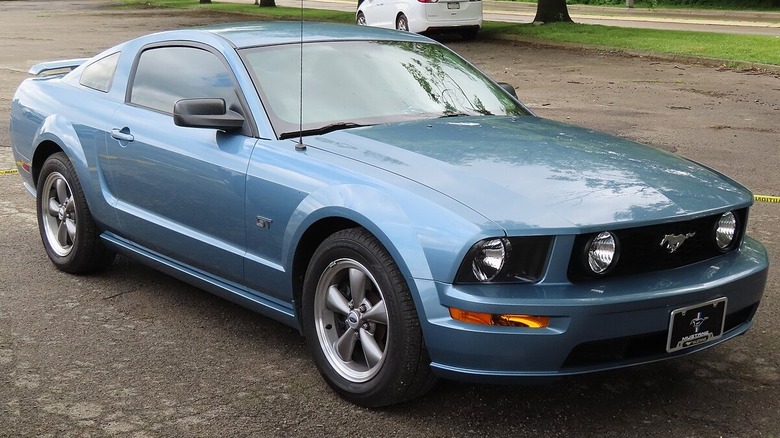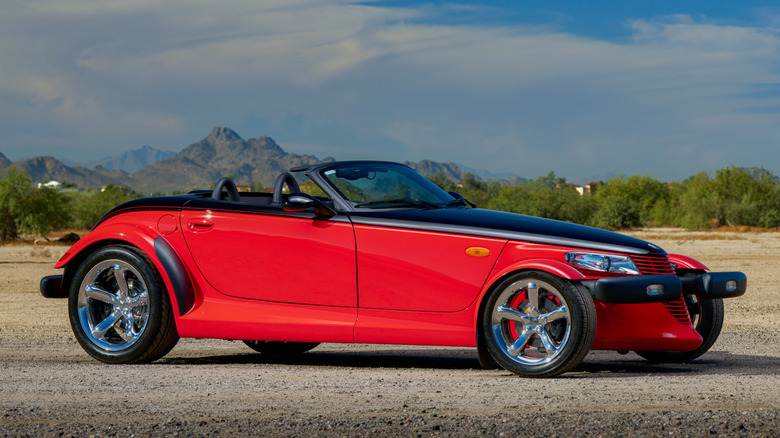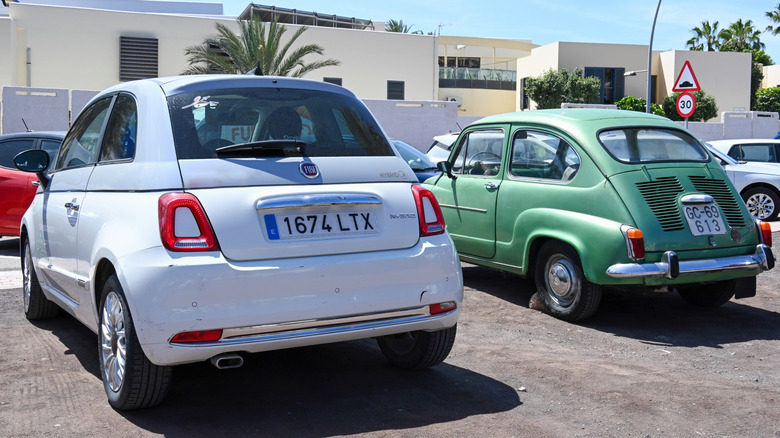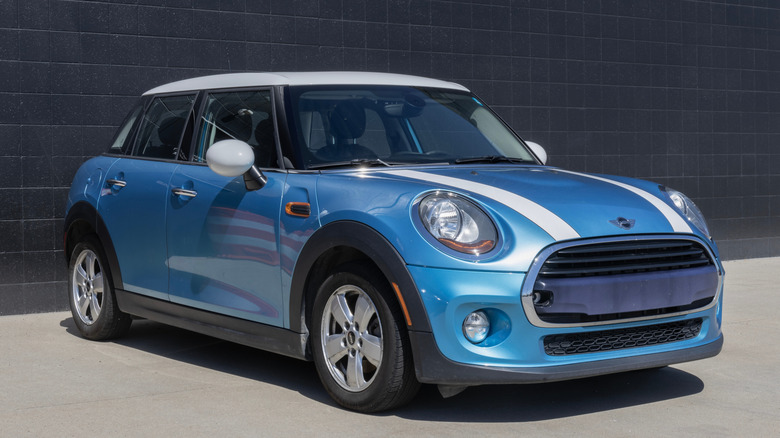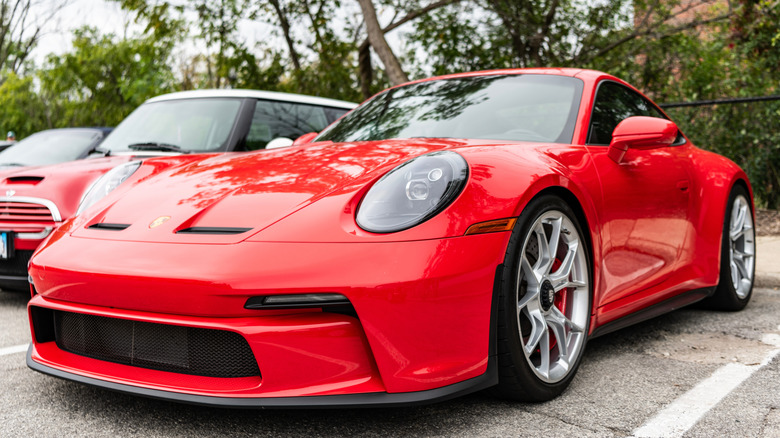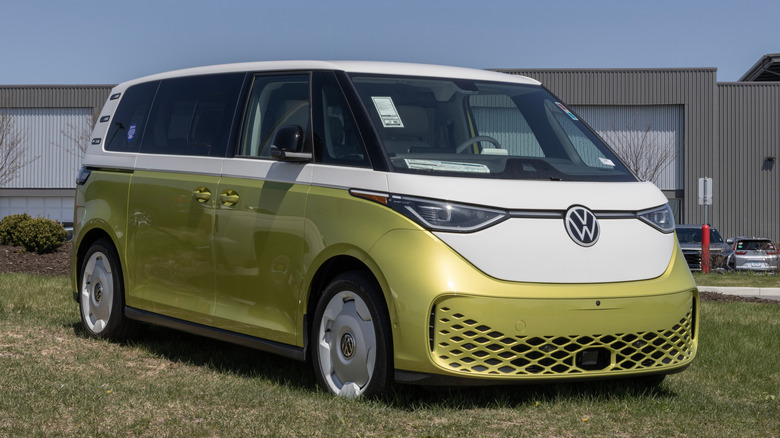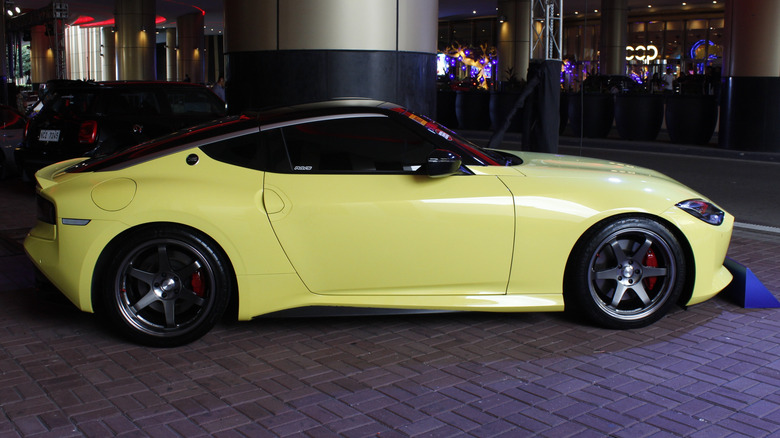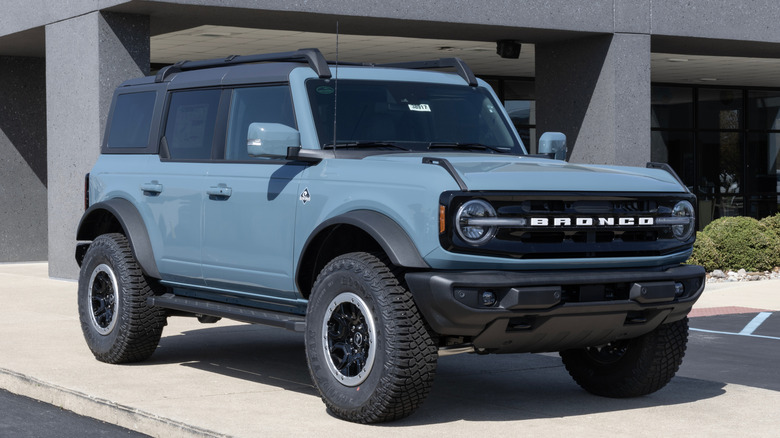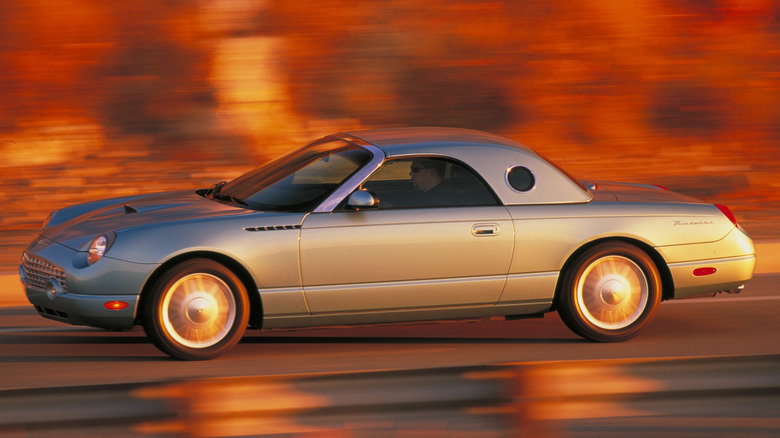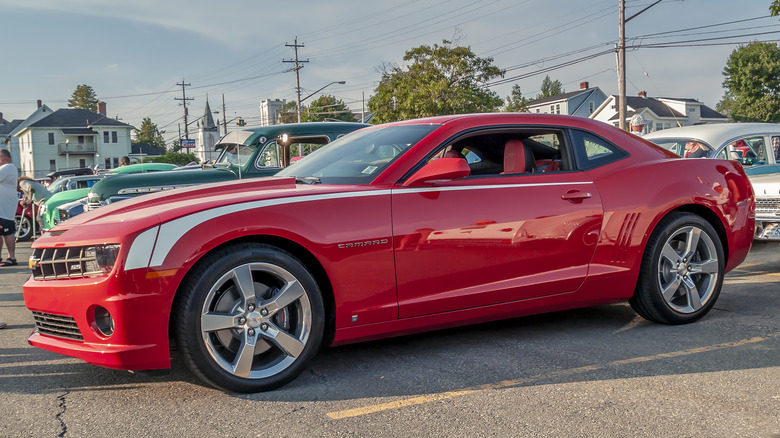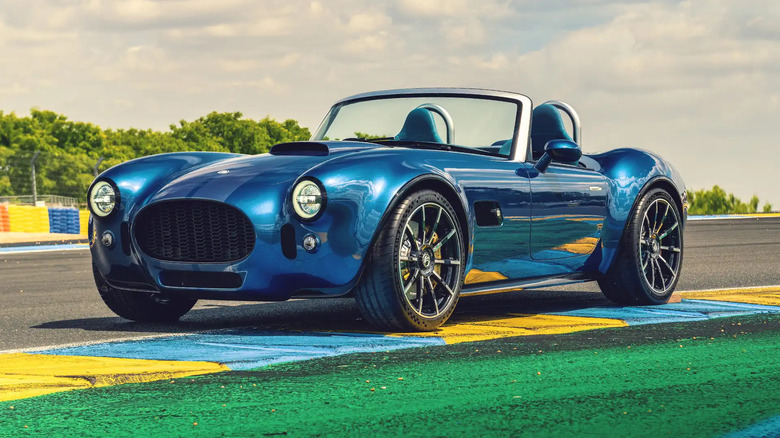11 Modern Cars That Look Like Retro Classics
The earliest days of the automobile were an exercise in utility. As engineers, tinkerers, and inventors developed horseless carriages, aesthetic design took a back seat to getting the darn thing to work. Form has always followed function, and if you don't believe us, just have a look at the first car ever invented.
First, automakers competed based primarily on performance and capability. Ford mass-produced affordable, everyman cars. The story may be apocryphal, but Henry Ford has famously been alleged to have offered a car in "any color, as long as it's black." However, the days of utilitarian design fell by the wayside as competition in the auto industry grew red hot.
Soon, cars began arriving in a rainbow hue of optional colors and distinctive designs. Passionate enthusiasts poured heart and soul into modifying vehicles to reflect personal choice. Designers in the industry saw the changes. Autobuilding became a combination of art, design, and engineering. Trends came and went as the decades passed. Some cars became timeless works of art, while others faded into anachronistic obscurity. Nearly a century and a half has passed since Karl Benz introduced the Motorwagen in 1886, and today designers have 14 decades of retro and vintage inspiration to draw upon.
The 21st century, in particular, has taken the classic lines of retro vehicles and applied them to the latest and greatest technology. In honor of some of the timeless works of art that emerged from production plants around the world, we now take a look at some modern cars that look like retro classics.
Ford Mustang
The American muscle car accounts for some of the best-looking cars ever designed. Through the 1960s and into the 1970s, they stole the hearts and minds of millions of fans. Various gas and environmental regulations ultimately shut the party down through the 1980s and 1990s, but the second coming of the muscle car roared into the public consciousness with the 2005 release of the retro-inspired fifth-generation Ford Mustang.
Ford ditched the 25-year-old Fox underpinnings and committed to a complete refresh of its Mustang. The new performance specs weren't exactly overwhelming — the base V6 made 210 horsepower, while the 4.6-liter V8 made 300, not all that much more than the Camaro and Firebird that had departed the market in 2002. The difference maker, however, was a stroke of genius. Ford designers replaced the half-egg shape of the SN95 Mustang with a look reminiscent of the Mustang's 1960s glory years. With a long hood, raked windshield, and a sloping fastback, the new Mustang made the world sit up and take notice.
Ho-hum performance aside, the '05 Mustang lit a fire that turned into a full-fledged renaissance of retro-inspired American muscle. Perhaps the best outcome of the Mustang's return to retro form was that engine technology was beginning to catch up with emission and mileage needs. Over the following couple of years, muscle car enthusiasts were treated to some insanely powerful muscle cars, including resurrections of legendary nameplates like the Challenger, Charger, and Camaro with horsepower numbers that eclipsed the originals.
Plymouth Prowler
Not every retro reimagining hits it out of the park like the Mustang. Chrysler was eager to follow up on the fan-favorite Dodge Viper supercar's success when it put together Team Prowler. With an eye toward developing a show-stopping concept, the team created the Plymouth Prowler concept in early 1993. Unlike the Mustang, which took inspiration from itself, the Prowler was an homage to an entire genre.
Doing it yourself is not a new concept. Not everyone was happy with a muted people hauler in the staid days of the one-color Ford. Home mechanics took apart cars and built them up in their own vision, resulting in a rich and storied hot-rodding culture in the United States. The Plymouth Prowler went into production in 1997, taking inspiration from the often-chopped and rodded '32 and '33 Ford five-window, among others.
The Prowler was an unmistakable two-seater convertible. Not particularly practical, it was aimed at a paper-thin niche of the auto market — if such a niche existed at all — those with the money to spend on an extraordinarily unique design. The exposed front suspension and lean, low lines spoke to a particular type of car fan.
Unfortunately for Chrysler, the type of person who loves a hot rod knows that they're essentially inseparable from V8 powerplants. Sadly, the Prowler employed a 3.5-liter V6 lifted from the Dodge Intrepid. Polarizing, the Prowler was maligned by some as out of touch and revered by others as a bold stroke of genius.
Fiat 500
Stepping away from American design for a moment, we cross the Atlantic Ocean to a brand that has helped define Italian automaking for nearly as long as automobiles have existed. Fiat was formed in 1899 by Giovanni Agnelli, who viewed cars as an experiment to bring transportation and jobs to all.
It was in the spirit of Agnelli's worldview that the Fiat Topolino – which translates to little mouse — appeared in before World War II. A few decades later, the new Fiat 500 Nouva showed up in 1957. It was a shade over nine feet long and powered by a two-cylinder, air-cooled engine, making an incredible 13 horsepower. It was made to navigate Italy's quaint and narrow streets in a practical and affordable manner, not bomb down an American highway. The Fiat made it until 1972, when it left production — but only temporarily.
When Fiat reintroduced the little mouse in 2007, it drew heavily on the original's retro aesthetic. Modern engine technology increased the power to between 69 and 105 horsepower, with those numbers growing with each successive generation. However, what hadn't changed was the overall appearance, with the new entry to the market being an unmistakable resurrection of its predecessor.
Today, the most modern iterations of the little mouse are the Fiat 500, whose most powerful iteration utilizes a 0.9-liter turbocharged engine making 105 horsepower, and the all-electric 500e with a 42 kW power system. Whichever one you choose comes with a heaping helping of vintage vision.
Mini Cooper
The Italians weren't the only ones to think of reviving a diminutive classic. The post-World War II years were lean for many nations, and we mean that in the automotive sense as well as the economical. There just wasn't enough gasoline to operate the machinery. Compounding things for Britain in the late 1950s was the Suez Canal Crisis, which choked the gasoline supply even more.
Leonard Lord of the Morris Company initiated the design of a fuel-efficient car that could still carry four adults. Lead engineer Alec Issigonis delivered the Mini. The earliest Mini launched in 1959 with an 848 cc, transverse-mounted inline four-cylinder that made 35 horsepower at 5,500 rpm.
The Mini took on the air of an instant classic, a reputation it would only build on as the years passed. Many variations emerged, including models for Australia, updated generations with bigger engines, and even minivan and station wagon iterations. BMW bought the Mini brand in 1996 and primed it for a refresh. The final classic Mini rolled off the line in 1999, but a rebirth was nigh.
BMW introduced the new Mini at the 2000 Paris Motor Show. It was significantly larger than the original but retained its distinctive retro look. The Mini's evolution has been a straight line from 1959 to today. To this day, fans can buy a Mini Cooper with all the benefits of modernity while retaining the visual charm of the original.
Porsche 911
If retro-inspired economy cars aren't doing it for you, how about a veritable sports legend? Besides having one of the coolest vintage car logos on the market, Porsche has applied its obsession with design to its most famous nameplate — the 911.
An advantage of hindsight in auto design is the ability to look back and co-opt the most effective or beautiful designs for the modern day. However, Porsche barely had to tweak the design of the original 1963 edition of its 911 to arrive at the curvaceous 2025 version. The long front hood, bubble cockpit, and sweeping fastback mounted on feminine haunches are present in both models despite the more than 60 years that separate them.
One could almost claim Porsche is stuck in the past. After all, the old and new 911s share similar lines and the same six-cylinder boxer engine configuration. If you liked the 911 in '63, you'll like it in 2025. But while the elegant, timeless design has changed a little, the performance specs tell the story of a car company in pursuit of perfection.
Where the 1963 Porsche hit 62 mph in 9.1 seconds and reached a top speed of 130 mph, the new one does things a tad faster. The 2025 911 GT3 has been clocked hitting 62 mph in 3.4 seconds and reaching a top velocity of 194 mph.
Volkswagen ID.Buzz
Volkswagen majorly cashed in on Baby Boomer nostalgia when it brought back the retro Volkswagen Beetle in 1998. What took a lot longer was the reintroduction of the Beetle's market mate in the VW Bus.
Volkswagen first put out its legendary Transporter in 1950, but it was the Type 2 that arrived in 1967 that became an icon of the swinging '60s counterculture. The Transporter lasted through the Type 6, although not every iteration was made available in the United States. In the meantime, Volkswagen titillated fans with a series of concept vehicles that never quite seemed to get off the ground -– until one did.
Volkswagen unleashed the Microbus in 2022 with much fanfare. Snub-nosed, flat-roofed, and friendly-looking, its distinct design reaches back to the glory days of the Type 2. However, that's about where the similarities end. Where the 1967 edition cost around $21,000 adjusted for inflation, the new one starts at $61,000 and climbs to nearly $70,000 pretty quickly. So much for the revolution.
The tech might explain the relative difference in price. The ID.Buzz eschews internal combustion for battery power. Its 282 horsepower and 413 lb-ft of torque would likely make a hippy who had to push the 53 horsepower edition up the last hill to Woodstock wildly jealous.
Nissan Z
The Z car has been making a space for itself in the pantheon of auto history since all the way back when Nissan went by Datsun. The original 240Z tore up the space between the stoplights with its rakish profile, undeniably sporty spirit, and quintessentially Japanese inline six-cylinder making 151 horsepower.
The Z label continued through the years, surviving Datsun's worldwide rebranding into Nissan in 1984 and gifting us with the Fairlady Z, 280Z, 300ZX, 350Z, and 370Z. Nissan paid various levels of homage to the original design over the years, but the RZ34 that debuted in 2023 may be the one that hits closest to the mark with what Motor Trend described as "nostalgic styling at an attainable price."
Known simply as the Nissan Z, the most recent Z car does more than honor its ancestor with its low profile, fastback rear end, and six-cylinder engine. Except the inline-six has been banished in favor of a turbocharged 3.0-liter V6 good for 400 horsepower and 350 lb-ft of torque. What certainly wasn't present in the original was a nine-speed automatic transmission — although real enthusiasts can opt for the six-speed with the good ol' third pedal.
While vintage styling is often a major plus in a new car, the Z misses the mark. Though unmistakably retro, it doesn't look all that much different from the last few, though hardcore fans might spring to get their hands on one.
Ford Bronco
Getting up a hill was never a weakness for the Ford Bronco. Ford helped produce over a quarter-million Jeeps, which became a ubiquitous presence on the battlefields of World War II. Jeep eventually spiraled off into its own thing, presenting the much-loved CJ to the market, and Ford wanted an answer of its own.
The resulting Bronco was released in 1965, a year after its fellow equine, the Ford Mustang. Rugged, individualistic, and capable, the Bronco gained millions of fans during a production run that spanned five generations between 1965 and 1996, when it left production for good. After it left production, Ford added insult to injury with a 2004 Ford Bronco concept that made the faithful drool — but they'd have to wait another 17 years before getting the reboot they desired.
The reborn Ford Bronco didn't disappoint when it hit the showroom floor for the 2021 model year. It looked like everything an original Bronco fan could want. Squared off with a no-nonsense stance, beefy tires, and a choice between a 300 hp 2.3-liter inline four-cylinder or 330 hp 2.7-liter V6, buyers could even take off the roof and doors just like the old days.
Pandemic supply shenanigans muted the roar of the Bronco's triumphant return, and the current used market average of $65,000 on Classic.com suggests that those growing pains continue to reverberate. Or maybe people can't get enough of the new Bronco's classic charm.
Ford Thunderbird
Another Ford product got a retro revival, but it didn't meet the same success as the Mustang and Bronco. Conceived initially as a Corvette-killer, the Ford Thunderbird received plaudits upon its debut at the Detroit Auto Show in 1954. Though Ford quickly shifted its vision for the T-bird toward the luxury end of the sport-luxury spectrum, it captured the zeitgeist of an age.
Ford never quite settled on a firm identity for its Thunderbird. The nameplate underwent 11 generational changes in a career that lasted from 1955 until 1997. After a brief hiatus, Ford brought the Thunderbird back in 2002 as a two seat roadster that was a dead ringer for the inaugural '55 to '57 first-generation style. Unfortunately for Ford, it fell somewhat flat.
The problem was what it always had been for the Thunderbird — a bipolar personality that couldn't decide between sport and luxury. Its 252 horsepower 3.9-liter V8 wasn't nearly enough to compete with its old foe in the bow tie, the 'Vette. It wasn't premium enough to compete with Ford's luxury brand, Lincoln — especially since it was essentially a redone Lincoln LS – let alone Cadillac.
What the 2002 Thunderbird had going for it was design. It was as if Ford was on the path that would lead to the fifth-generation Mustang a few years later, but targeting the wrong demographic and referencing the wrong age. It's too bad, too, because the curves and lines of the body style call to mind poodle skirts and canoodling at the soda fountain. Unfortunately, those days were too long gone to translate to enough sales to keep the Thunderbird alive, so Ford axed it in 2005 and never looked back.
Chevrolet Camaro
If the Mustang is the front-page news of America's muscle revival, then the Dodge Challenger is the byline and the Chevrolet Camaro is relegated to the back page. Chevy might have taken the wind out of its own sails by discontinuing the Camaro, which had been in continuous production since 1967, after the 2002 model year. When Ford lit a vintage fire under the market with the fifth-gen Mustang, Chevrolet seemed almost like it was bandwagoning onto the trend with the 2010 return of the Camaro.
It's a shame because the fifth-generation Camaro that showed up in 2010 had oodles of old-school charm, replete with shark fins behind the doors and analog gauges, just like on the old ones. Things weren't too shabby under the hood, either. The SS edition got 400 horsepower courtesy of a 6.2-liter V8 that was upgraded to 455 horsepower when the sixth generation debuted in 2016. Camaro fanatics could even shell out for the 650 horsepower ZL1 trim that put it in Corvette territory.
Alas, the Camaro ran out of gas. Chevrolet announced the nameplate would go back into retirement following the 2024 model year, which is too bad because the sixth-gen, by all accounts, was a formidable sports car in its own right. Maybe it'll come back again someday, but if Chevrolet doesn't believe in it, why should we?
AC Cobra
Unroll your eyes. We're not talking about the thousands of Shelby Cobra replicas currently littering the garages of America in various states of completion. The automotive icon enjoyed a brief but bright career back in the 1960s and has been haunting the memories of gearheads ever since. What if we told you that you could buy a brand-new Cobra today?
AC Cars, the U.K. builder that provided the body for Carroll Shelby's legendary race car, has brought back what can best be described as a resto-mod Cobra without the restoration part. It has been building all-new Cobras since 2023 in the Cobra Roadster GT. Fans can't get any closer to an actual Shelby Cobra with all the right lineage this side of a few million bucks at the auction block.
AC did it right if we do say so ourselves. The new Roadster GT isn't all Cobra, but that's only because the originals were rough-and-ready racers. The new one is decidedly more sophisticated but retains virtually all the mean, muscular menace of the original. One can be yours if you can pony up nearly $300,000. Not quite as cheap as a Factory Five car tribute kit, but still a sight more affordable than an original.
